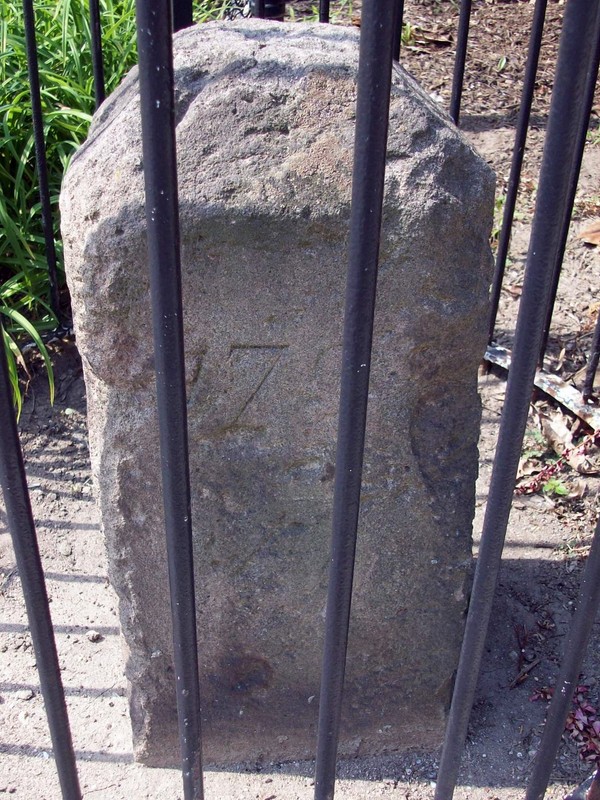Federal Boundary Stone: Northeast 2
Introduction
Text-to-speech Audio
Images
Boundary Marker Northeast No. 2, surrounded by the fence erected by the Daughters of the American Revolution. Image by Bruce Andersen from Washington, DC - Flickr (CC BY-SA 2.0)

Backstory and Context
Text-to-speech Audio
On July 16, 1790 (amended March 3, 1791), the Residence Act granted President George Washington authorization to choose the site for a national capitol. It was to be a 100-square-mile plot located on the Potomac River, between the cities of Alexandria, Virginia and Williamsport, Maryland. Washington selected the southernmost location that encompassed what is now Old Town Alexandria and a busy port.
The territory chosen, Secretary of State Thomas Jefferson instructed Major Andrew Ellicott, a prominent surveyor, to begin demarcating the 10-mile square of the city limits. He began his work on February 11, 1791. Ellicott hired the Maryland astronomer and surveyor, Benjamin Banneker, to provide the astronomical observations and calculations needed to fix the south corner. "Banneker fixed the position of the first stone by lying on his back to find the exact starting point for the survey ... and plotting six stars as they crossed his spot at a particular time of night."1
The initial survey was completed in April, an event commemorated by the Masonic Lodge in Alexandria on April 15th. The Lodge placed a small, ceremonial stone at Jones Point at the south corner, although it was later replaced with a larger stone bearing the inscription, "The beginning of the Territory of Columbia."
The marker stones are made of Aquia Creek sandstone, weigh approximately half a ton (with the exception of the cornerstones), and are separated by one-mile. Those placed more than a mile apart include an additional marking, indicating the extra distance. On each stone, facing D.C. territory, is the mile number and inscription "Jurisdiction of the United States." The opposite side features the name of the state the stone borders. The other faces state the magnetic variance of their location and the year the stone was placed.
Thirty-six of the marker stones are still in place. Boundary Marker Northeast No. 2 is located along the Washington, D.C./Maryland line and is surrounded by a fence erected by the Daughters of the American Revolution in 1915. DAR is an organization for women descended from individuals involved in the American Revolution. It has engaged in numerous preservation efforts throughout the Washington, D.C. area, including a 2014 project to clean and restore the markers. Owing to its historical significance, this particular marker was among those added to the National Register of Historic Places on November 1, 1996.
In 2011, the District of Columbia geographic information system program used Global Positioning and contemporary survey technology to validate the efforts of Ellicott's team. It found that the historical surveying effort had been conducted with a high level of accuracy.
Sources
1. "Boundary Stones of the District of Columbia." Boundarystones.org. Accessed October 1, 2016. www.boundarystones.org/. "Boundary Markers of the Original District of Columbia." Wikipedia, the Free Encyclopedia. Accessed October 1, 2016. https://en.wikipedia.org/wiki/Boundary_Markers_of_the_Original_District_of_Columbia.
https://commons.wikimedia.org/w/index.php?curid=11322698
